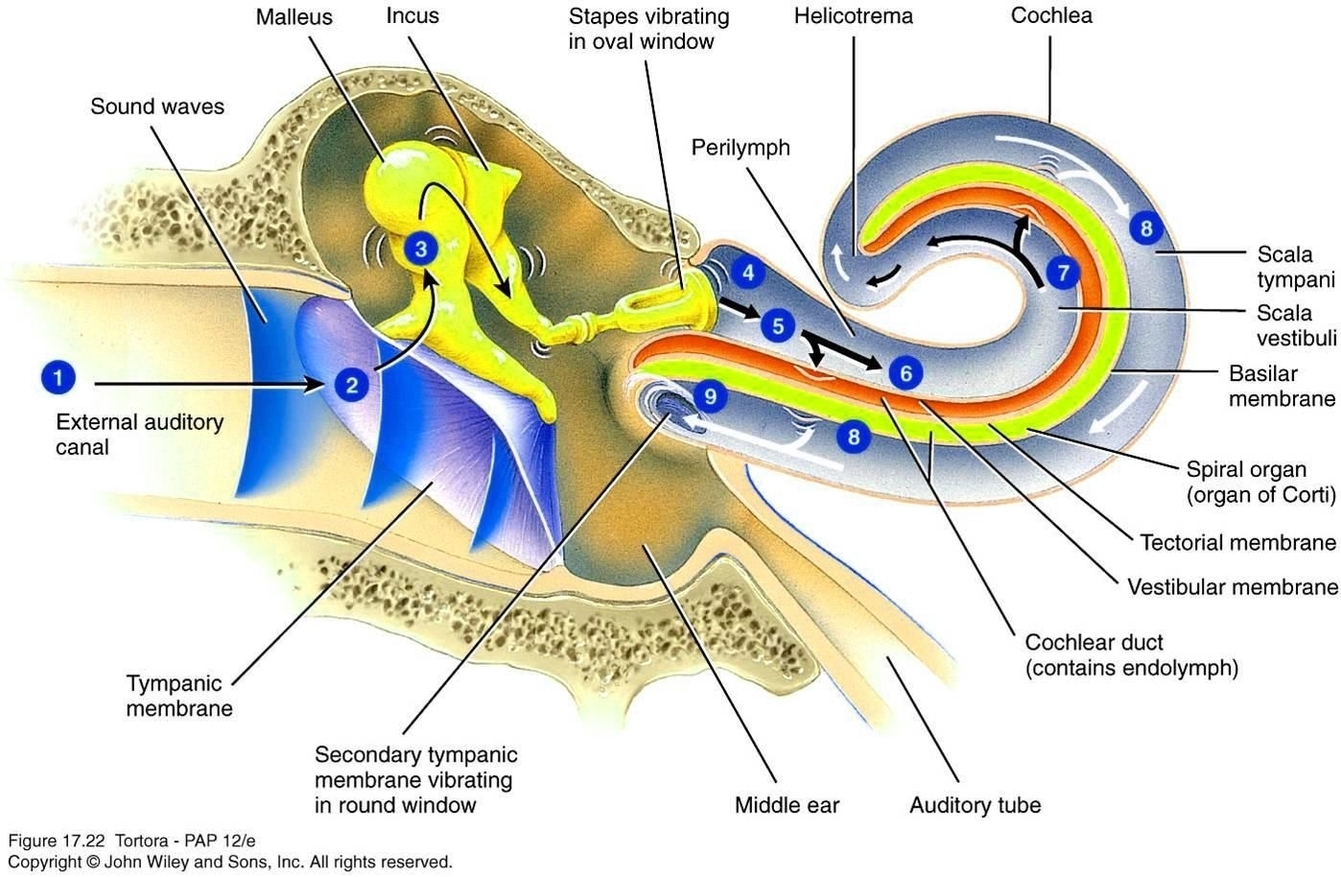The human ear is a complex organ that serves two main functions: hearing and maintaining balance. It is typically divided into three main parts: the outer ear, the middle ear, and the inner ear.
Outer Ear
The outer ear consists of the visible portion called the auricle, or pinna, and the short external auditory canal. The auricle collects sound waves and guides them to the tympanic membrane, commonly known as the eardrum. The outer ear’s function is to collect sound waves and guide them to the tympanic membrane.
Middle Ear
The middle ear is an air-filled cavity in the temporal bone. It contains a chain of three tiny bones the malleus (hammer), incus (anvil), and stapes (stirrup), collectively known as the auditory ossicles. These bones conduct sound from the tympanic membrane to the inner ear. The middle ear also houses the eustachian tubes, which help equalize the air pressure in your ears.
Inner Ear
The inner ear is a complex system of fluid-filled passages and cavities located deep within the temporal bone. It consists of two functional units: the vestibular apparatus, which maintains balance, and the cochlea, which is responsible for hearing. The vestibular apparatus consists of the vestibule and semicircular canals, which contain the sensory organs of postural equilibrium. The cochlea contains the sensory organ of hearing.
Function of the Ear
When sound waves enter the ear canal, the eardrum vibrates. This vibration is passed on to the ossicles in the middle ear. The ossicles amplify and transmit these sound waves to the inner ear. Once the sound waves reach the inner ear, tiny hair cells called stereocilia transform the vibrations into electrical energy and send it along nerve fibers to the brain.
The inner ear also plays a crucial role in maintaining balance. It contains semicircular canals filled with fluid and hair-like sensors. When you move your head, the fluid inside these canals moves the hairs. The hairs transmit this information along the vestibular nerve to your brain, which then sends signals to your muscles to help you stay balanced.
In conclusion, the ear is a remarkable organ that not only allows us to perceive and interpret sounds but also plays a crucial role in maintaining our balance. Its complex structure and function are a testament to the intricate design of the human body..


